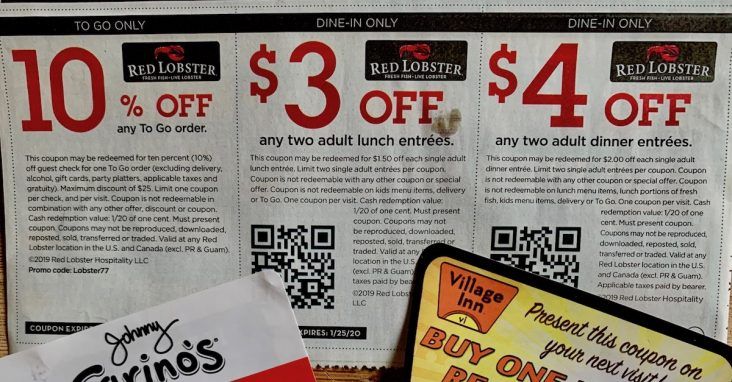Coupon usage drives traffic, higher restaurant sales
by November 18, 2019 6:52 pm 3,525 views

U.S. consumers may have strong financial balance sheets but they still seek value with the purchases they make and the restaurants they chose. Coupon usage at restaurants is up 5% by about one-third of the population, according to a study by Packaged Facts.
The report said adults with household incomes above $150,000 are 11% more likely than average to use restaurant coupons.
A report from Valassis found coupon users visit restaurants seven times per month on average compared to non-coupon users who eat out just 4.8 times per month. Overall, Valassis said 77% of consumers said they use coupons at restaurants.
“Consumers’ desire for savings is strong across purchase categories and the restaurant market is no exception,” said Dana Baggett, executive director-restaurant for Valassis. “Marketers who expand outside of traditional value-oriented consumers and tap into other demographics via proximity-based advertising strategies, competitive pricing and offers will attract diners and drive consumer spend.”
While Americans are largely creatures of habit with 54% of diners usually visiting the same eatery, the report found 20% switch restaurants based on promotions or coupons and 12% do so to find the lowest price. A majority of consumers (54%) will pick the restaurant that offers a coupon over eateries that don’t. For those dining out weekly, that number rises to 60%. A majority of consumers (67%) are more likely to visit an eatery for the first time if there is a coupon offer.
Four in 10 consumers want to receive coupons or promotional offers from restaurants at least once a week. Millennials and Boomers have the strongest preference for coupons at 54% and 50%, respectively.
Despite digital couponing become more prevalent among consumers, the tried and true U.S. mail was still the most desired form to receive promotions by 49% of the survey respondents. One in three respondents said they use restaurant coupons at least one time each week.
Valassis said coupon savvy consumers use promotional offers to find the highest quality foods for the lowest prices. This cohort makes up about 13% of restaurant visits with an average ticket spend of $19. This group is open to visiting a variety of restaurant types and their main focus is on quality for less.
Value seekers comprise the highest percentage of restaurant visits at 70%, The median spend per visit is $15. This cohort is driven by affordability and convenience. This group is mostly focused on the lowest price. About 37% of this cohort have children under 18. By the age, this cohort is evenly split between Millennials, Gen Xers and Boomers.
The smallest cohort is those who pay full price. This makes up just 17% of restaurant-goers. Their median spend is $20 per visit and they are driven by food quality, speed, variety of occasion and customization. This cohort also visits fine-dining restaurants more often than the overall consumers. These are smaller households with higher incomes than the other two cohorts.
Valassis said coupons help drive traffic at restaurants. A whooping 77% of consumers said they use restaurant coupons, and 67% will choose the restaurant for the first time if they have a coupon. TDn2K reported this month’s comp-store traffic rose by 0.8% in October across the industry. While traffic was softer than in the previous two months, on a two-year basis traffic was up 1.1% in October. It also marked five consecutive months of positive gains in same-store sales. Industry analysts were also happy to see an uptick in total sales.
“Guest check growth accelerated in October,” said Victor Fernandez, vice president of insights for TDn2K. “At 3%, check growth during October was the highest seen in the past three years.”
He said as the industry heads into the fourth quarter, the fear was that tougher sales comparisons from the fourth quarter of last year would throw restaurant sales back into negative growth territory.
“But seeing restaurants grow their sales during October on top of positive sales growth during the comparable month a year ago suggests the industry’s sales momentum is robust and can carry into the New Year,” he added.
